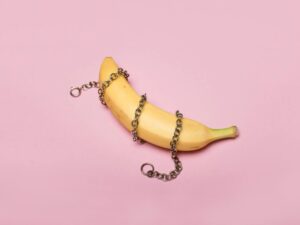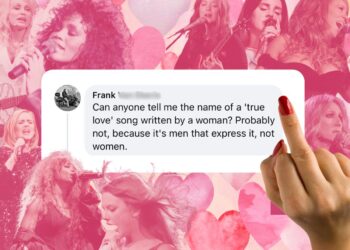Feminism is being – rightfully – called out on social media. “Western feminists” raise their voices for Muslim women living under oppressive leadership. They celebrate and applaud Saudi Arabia for allowing women to drive and live independently. They celebrate United Arab Emirate states for allowing women to wear what they want freely. All the while, when a Muslim woman’s free choice to wear the headscarf is taken away by western nations, there is little to no outrage. New year, same old hijab discrimination.
Initially, as a western feminist, standing in solidarity with women of all walks of life, I took offence to the call out, but the unfortunate reality is that too often Muslim women are forced to take to social media to sing the same song of justice: #HandsOffMyHijab. We are only five months into 2022 and the religious intolerance Muslim women are facing is revolting. Thousands of Muslim women feel alone in this fight and the silence from western feminists is deafening.
The French government, for instance, has been on a movement to impose a hijab ban for more than a decade. This year, the French government continues to push further. They are proposing to ban women and girls from wearing hijab while playing sports. According to CNN, the French Senate voted 160 to 143 in favour of the ban on wearing the hijab and other “conspicuous religious symbols” in sports competitions. While funding historical churches and Catholic churches, the French government defends the concept of secularism by also banning the Jewish kippah and large Christina crosses.
The ban of hijab at an Indian high school in Karnataka also made headlines in January 2022. The the Indian state is implementing a more elastic version of secularism as the public practice of Hinduism has not been barred. This isn’t secularism, this is simply discrimination.
“Refusing to let girls go to school in their hijabs is horrifying. Objectification of women persists – for wearing less or more.” – Malala Yousafzai, Nobel Laureate and Pakistani Activist.
Hijabi (a term used to identify Muslim women who wear hijab) students in the Southern Indian state of Karnataka were told by their school administration they were not allowed at school with their headscarves on. These students were physically barred from entering the school premises unless they removed the hijab. The parents of these students petitioned the court to overturn the ban, arguing it violated the girls’ right to an education and freedom of religion. The Indian court is continuing to uphold its temporary ban on hijab and religious garments in class.
The students didn’t leave it all in the hands of their parents and began protesting. Narjis (@HYDERBADIE) took to Twitter, and said: “The absolute irony of hijabi girls being denied access to education when the first university in the world was founded by a Muslim woman.”
These hijabi students are understandably distressed. They have been made to feel as though they must choose between their education and their religion, which are both explicit human rights.
Rashad Hussain, United States Ambassador for International Religious Freedom declared that “Religious freedom includes the ability to choose one’s religious attire. The Indian state of Karnataka should not determine permissibility of religious clothing. Hijab bans in schools violate religious freedom and stigmatize and marginalize women and girls.”
In February, a Muslim female high school student of Otago, New Zealand was attacked and subsequently hospitalised for a concussion. Hoda Al-Jamaa, 17, and her friends at Otago Girls’ High School were approached by three female students who asked them how to swear in Arabic. These students taunted Hoda and her friends; escalating the situation by ripping Hoda’s hijab off, beating her and filming it all. “Two of the girls held me and one hit me and after I fell on the ground, she… was still hitting my face and my body. I was waiting for the teacher to help me,” Ms Al-Jamaa said. The students then released the recorded video, showing off Hoda’s hair to all, including boys. “My hijab is everything for me and I love my hijab,” Ms Al-Jamaa added.
Muslim women involved in these acts of discrimination and violence are having their rights stripped from them.
As these hijab bans and acts of discrimination continue to occur daily, various ‘justifications’ have been put forward including national security, integration and women’s liberation. Apparently, Muslim women exercising their human right to wear what they choose is deemed a safety risk.
Is the hijab a weapon of mass destruction?
If a woman wanted to portray acts of terror, do European governments really think she needs the hijab do it? Last time I checked, weapons can be hidden under any garments. What’s next? Should governments consider all clothing a safety risk and demand citizens to walk around nude?
These bans are racist. The white saviour complex has left no space for intersectionality. Swiss feminist organisations have backed the burqa ban, supporting the government’s stance that “showing your face is a sign of our freedom”. These feminist groups are only concerned with the idea of “saving” and “freeing” Muslim women from Islamic coverings. But this is an idea they hold without considering that wearing hijab is a choice for many Muslim women.
These feminist groups claim that such bans would help and protect Muslim women, allowing them to live freely. How ironic, right? Right now, Muslim women are fighting for their right to wear Islamic attire. Forcing Muslim women to remove their hijab is entrapping, not freeing.
At The New Feminist, we want to ensure that non-Muslim women are not brainwashed by mainstream, non-intersectional feminism that simply ignores religious freedom. We will not leave Muslim women to bear the consequences or stand alone in their fight.
Hijab is not oppressive unless it is forcefully imposed. In fact, it is a symbol of empowerment for many Muslim women. The forced removal of hijab is as misogynistic and hateful as it is to force women to wear hijab. Bella Hadid’s statement said it well enough: “The egocentrics of a man to think for even one second, that they have enough validity to make decisions for a woman in 2022, are not only laughable by actually sick in the head.” Bella continued quoting her friend, “You know, at the root of it all, all of this is just much deeper than Islamophobia; it’s pure sexism and misogyny. No matter the countries or the time men always want control what a woman does and wears.”
Let Muslim women choose to wear the attire they want to wear. As feminists, we hear and must answer the call for solidarity.

We encourage our readers to talk to Muslim women and hear their experiences. This includes those affected by bans and those who are actively fighting against the bans. The best way to support them is to listen to them and amplify their voices.
Other ways you can support Muslim women and their freedom of choice is to follow blogs and influencers. Some examples are: MuslimGirl.com and Instagrammers like @salehfamily, @hautehijab, @neelam_and @omayazein, to name a few.
Follow the hashtags #HandsOffMyHijab #HijabIsOurRight #CantBanUs. You can learn more about the movements and use the hashtags to show your support and keep the conversation going.
Lastly, you can sign on to the petitions like:
Or donate to funds supporting hijab awareness, like https://www.launchgood.com/campaign/world_hijab_day_support_global_movement_to_end_bigotry#!/
Enjoyed this article? Read more here.














